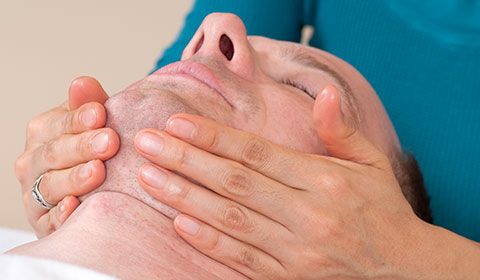You use your TMJ every single day: to eat, talk, yawn and even breathe. But you may not actually notice the joint until you experience jaw pain.
If you have a sore jaw that won’t go away, consult with a TMJ specialist as soon as possible. The earlier you seek treatment, the faster you can recover.
What is temporomandibular joint (TMJ) disorder?
TMJ stands for temporomandibular joint. The TMJ connects your lower jaw to your skull, just below the temple and in front of the ear. This hinge joint gives your mouth its range of motion, letting you move your lower jaw up, down and side-to-side.
When you have a TMJ disorder — a type of temporomandibular disorder or TMD — the movement of these joints is affected, immobilizing and/or causing pain to the area. Commonly this disorder is incorrectly referred to as just TMJ, which is the joint itself. The proper term is temporomandibular disorder or TMJ disorder. These issues are the second most common type of orofacial pain, following dental issues.
There are three main types of temporomandibular joint disorders:
1. Muscle disorders
The most common type, this TMJ disorder involves pain in the muscles that control the function of your jaw, neck and shoulders.
2. Derangement disorders
A degenerative TMJ disorder involves a disruption or imbalance in the inner workings of the jaw, such as a dislocation of a disc or a damaged bone.
3. Degenerative disorders
Degenerative disorders are connected to the overall wear and tear of the TMJ through conditions like arthritis, which can deteriorate the cartilage in the joint.

